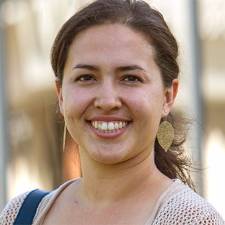Deaf and Hard of Hearing Credential Program
The needs of today's students with hearing loss are changing as technology and evidence-based best practices allow parents and teachers to provide individualized and comprehensive options.
Join Us for Our Next Event
Teaching Credentials Online Information Session
Wednesday, Nov. 13, 2024 at
12:00 - 1:00 pm
Quick Facts
| Program Units 45 |
| Program Format Hybrid, part-time course load, evening and weekend classes |
| Course Availability Fall and Spring 15-week semesters, and Summer sessions |
| Start Term New students begin during the Summer semester |
Locations
|
This program blends scientific research with practical application, offering heightened
effectiveness. Upon completion of the program candidates will be eligible for the
Preliminary Education Specialist Credential with a Deaf and Hard of Hearing Specialty
offered by the California Commission on Teacher Credentialing.
Request Information
Receive a program brochure and financial aid options.
Contact Us
clugrad@callutheran.edu
(805) 493-3325
Master's Degree Option
Upon completion of the Preliminary credential program, you can take these courses to earn the M.S. in the Education of the Deaf degree:
- EDGN 509 Situating Yourself as a Scholar Practitioner and Teacher Leader
- EDGN 510 Collaboratories of Practice - Understanding Change Theory
- EDGN 599 Education Improvement Plan - From Theory to Praxis
Program Highlights
- Students gain experience and skills in spoken language development, aural habilitation, inclusion, literacy and supporting families.
- Candidates who meet Internship Credential requirements may complete their program under the Internship Option.
- Designed to accommodate working professionals, hybrid classes are offered evenings and weekends at our Main Campus.
- Faculty is comprised of highly-regarded practicing professionals.

Briseida FavelaIn the Deaf and Hard of Hearing credential program, I love the fact that we cover everything from working with babies to working with high school students. It expands your options and provides a broader look at the possibilities when teaching students who are deaf and hard of hearing.